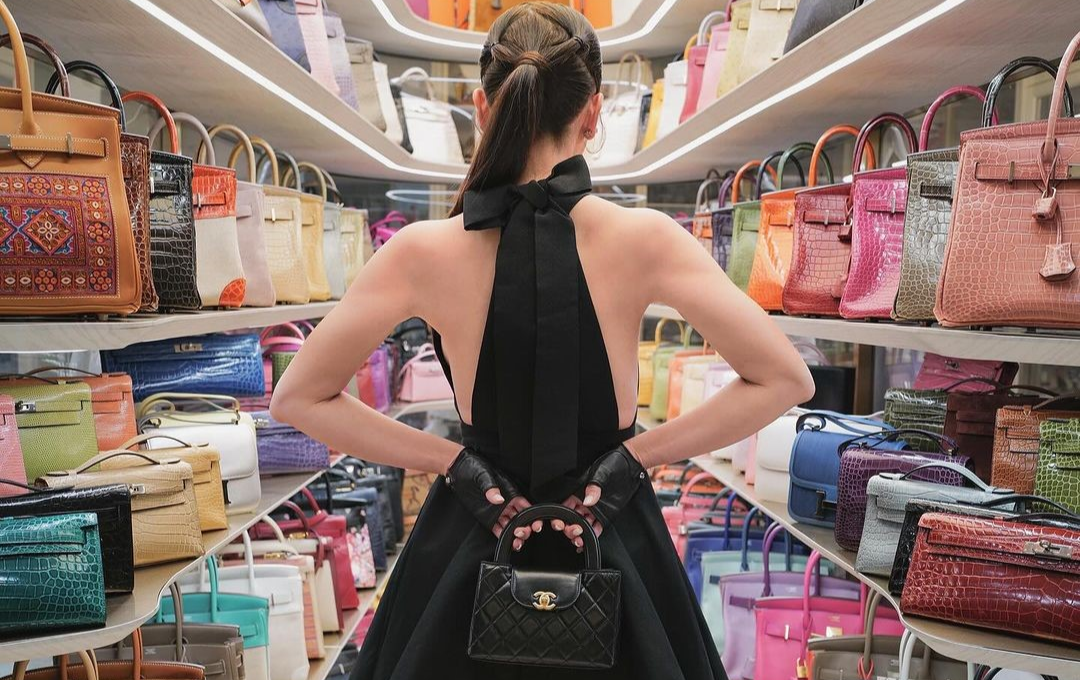The Great Luxury Swindle: Why Your Designer Bag is A Bad Investment

The Great Luxury Swindle: Why Your Designer Bag is a Bad Investtment
Thea Elle
Mar 19, 2025
Once upon a time, luxury bags were simply fashion accessories. Then, someone at CHANEL and HERMÈS had a stroke of brilliance: if you tell people a handbag is an “investment,” they’ll feel better about spending a small fortune on it. And so, the myth was born.
Influencers, resellers, and even financial analysts jumped on board, preaching the gospel of “investment pieces.” They waved graphs, pointed at resale prices, and conveniently ignored one small detail—luxury bags, like stocks, can crash. What happens when the hype shifts, the trends die, or a brand decides to flood the market with new releases? Suddenly, that “valuable asset” starts looking a lot like a liability.
And yet, people continue to treat their designer bags like blue-chip stocks, convinced that their purchases are somehow immune to the forces of supply and demand. The reality? Luxury brands are not in the business of creating wealth for consumers. They are in the business of extracting it.

The False Promise of Handbag Investments
The Artificial Value Trap
The moment you buy a luxury handbag, it loses value. That’s an undeniable fact, yet luxury marketing has managed to convince people otherwise. HERMÈS bags, for example, are positioned as rare collectibles, but their exclusivity is a carefully curated illusion. The brand manufactures scarcity by limiting supply while increasing demand, making people think they are purchasing a rare commodity when, in reality, they are simply part of an orchestrated game.
For a bag to be a true investment, it would need intrinsic value—something that holds worth beyond artificial hype. Gold, real estate, and fine art have tangible reasons for appreciating over time. A leather handbag? Not so much. It’s a trend-driven, brand-dependent product that holds value only as long as people are willing to buy into the illusion.
The second-hand market, often cited as proof of luxury’s investment potential, is another marketing masterpiece. The brands themselves have no interest in supporting resale markets unless they can profit from them. CHANEL, for instance, has aggressively raised retail prices in an attempt to keep its bags out of the hands of resellers, while LOUIS VUITTON burns unsold inventory to maintain an illusion of scarcity. This isn’t an investment landscape—it’s a high-stakes game of manipulation.
The Real Reason Why the Rich Buy Luxury
If luxury bags were truly about investing, billionaires would be leading the charge. But here’s the truth: the ultra-wealthy aren’t treating their BIRKINS like stock portfolios. They buy them for fun. They store them away, gift them, or, in some cases, don’t even bother using the real ones. The idea that they are purchasing bags to “diversify assets” is a fairy tale sold to the middle class, who are desperate to prove they’ve made it.

For every person who flips a bag for profit, there are dozens who lose money.
The Myth of Resale Profits
There’s always a viral story about someone who bought a HERMÈS bag for $10,000 and resold it for $20,000, but these anecdotes ignore the countless others who bought into the hype and couldn’t even break even. The resale market is a shark tank, where only a select few truly profit, and the majority are left holding overpriced leather.

Even the most “profitable” bags require careful curation—knowing which model, color, and hardware will hold value years down the line. Unless you’re willing to dedicate your life to tracking market trends and securing rare finds, you’re better off putting that money into an actual investment. The luxury resale business benefits brands, resellers, and a handful of lucky flippers, but for the average buyer, it’s just another expensive illusion.
The Smart Way to Play The Game
If you love designer bags, buy them. Just don’t lie to yourself about their value. The real winners in this game aren’t the ones treating their handbags like investments; they’re the ones who understand that fashion is just fashion. There’s no shame in purchasing a luxury item for enjoyment, but there’s plenty of shame in convincing yourself it’s a financial strategy.
For those who want the luxury look without the financial drain, high-quality replicas offer a smarter alternative. They provide the same aesthetic appeal without the brand’s inflated price tag, allowing consumers to enjoy the style without falling victim to the illusion of investment. While some may clutch their pearls at the thought, the reality is that even billionaires aren’t above carrying a good dupe.

The resale market is not a guarantee of profit—it’s a gamble.
Luxury Is A Consumer Game, Not A Wealth Strategy
Luxury bags are not assets. They are products, designed to be sold at extreme markups under the guise of exclusivity. No matter how many price hikes CHANEL implements or how many hoops HERMÈS makes customers jump through, at the end of the day, they are selling leather goods—not stocks, not gold, and certainly not financial security.
The true investment is in knowledge—knowing when you’re being sold a fantasy and choosing to step back from the illusion. The smartest luxury consumers aren’t the ones fighting to get on the HERMÈS waitlist. They’re the ones who see through the marketing and refuse to be played.




